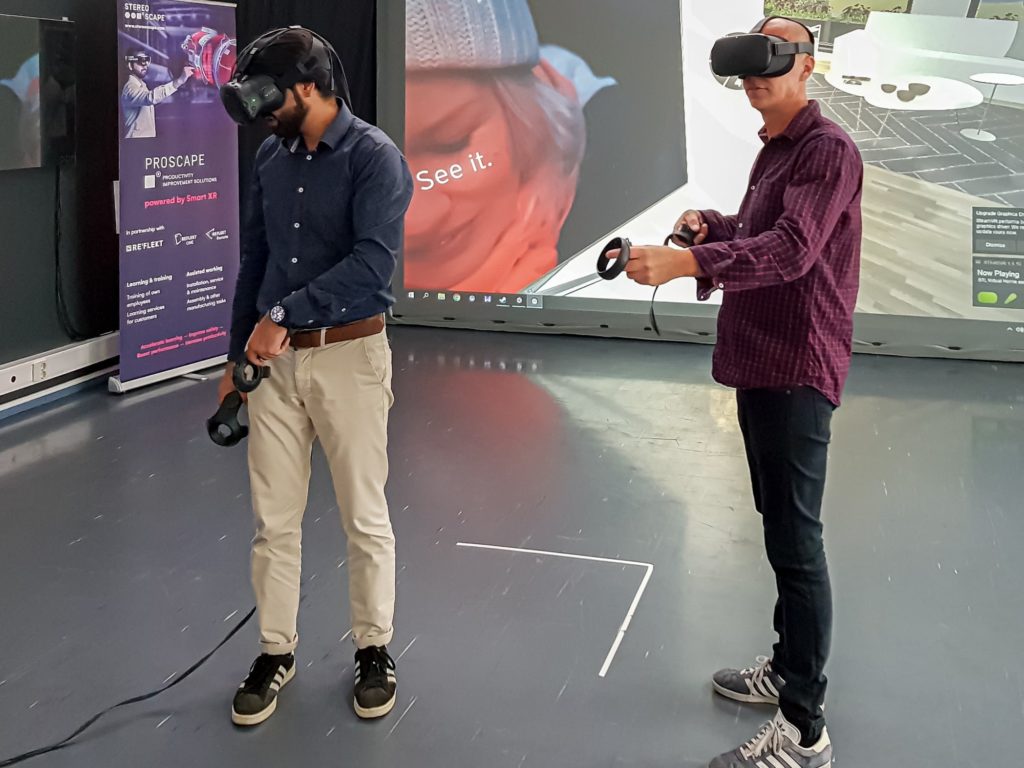The large upside potential of XR technology
An extensive survey of executives at 700+ companies in different parts of the world by Capgemini Research Institute found that 75% of organisations with large-scale XR (Augmented Reality/Virtual Reality) implementations realise over 10% operational benefits. PwC predicts AR and VR have the potential to deliver a $1.5 trillion boost to the global economy by 2030 – from $46 billion in 2019. The business benefits these technologies can deliver are now richer and more attractive, and technological advances are creating an improved user experience.
But challenges in implementation
Whilst there’s mounting evidence of the business benefits and economic potential of AR and VR (or XR for short), there are several challenges that can hinder XR technology adoption. Last year, the Swedish RISE research institute published a study on why industrial companies haven’t yet fully implemented XR. Insufficient in-house knowledge; difficulties in finding a concrete business case; and lack of XR vision that employees can follow were some of the challenges identified – along with more technical problems, like secure transfer of CAD files.
AR/VR use cases
Capgemini’s research shows that the inability to identify a use case is a challenge for more than 50% of industrial enterprises. Fortunately, early XR adopters are showing where to look for applications that are likely to generate the most value – some “must-do” use cases, like AR-enabled repair and maintenance, are already emerging.

A 2018 survey by IDC identified key AR use cases in different parts of enterprise value chains. For example, the top three service-related use cases included 1) providing interactive, 3D digital service instructions; 2) improving knowledge transfer between seasoned and new employees; and 3) displaying information, like service details, associated with a machine. So, to find the ‘right’ use case, useful information is available from companies already utilising XR.
AR/VR business case
Once the XR use case has been identified, the next challenge is to help management see a real business case in XR: does it make business sense to invest time, effort and money in an XR implementation? A proof of concept (PoC) is a crucial step in demonstrating the business case.

An effective XR solution should fit its intended purpose; the solution should be desirable, viable, feasible and sustainable. A PoC will help prove whether the XR technology and solution perform as planned. A PoC will shed light on whether end users are willing to adopt the solution; whether the solution will boost worker performance or produce other business benefits; and whether the solution can contribute to business sustainability. A PoC also gives various stakeholders a chance to evaluate design choices before full-scale implementation and provide valuable feedback.
PoC sprints for smart XR solutions
At Stereoscape, we use the sprint approach to proofs of concept – fast iterations and quick learnings in a time-boxed process – in tune with the well-known design sprint framework. The purpose is to move quickly to practical evaluation of a prototype XR solution that has been tested with real users and that has predefined measures for success to help decisionmaking.

Discover – Define
Some of our clients have a clear XR use case in mind, whilst others have recognised the XR potential in, let’s say, training but have not yet identified a specific application to investigate further. An exploration workshop – with benchmark and reference cases, demonstrations etc. – will help pitch a particular use case to decisionmakers.
- MAPPING
The mapping phase is intended to research and understand the use case from different perspectives to define it in more concrete terms for the concepting phase: What are the problems we are solving or the opportunities we are targeting with XR? Who are the actual end-users and other key stakeholders? What are the qualitative and quantitative measures for success (KPIs)?
Develop – Deliver
- CONCEPTING
The focus here is on developing alternative XR solution concepts for the concrete use case – for example, concepting XR learning experiences that solve current problems in the safety training of temporary staff hired for annual maintenance. Wireframes and storyboards help illustrate the concepts to decisionmakers.
- PROTOTYPING
Once a concept (or concepts) has been selected for prototyping – based on user, stakeholder and business needs – we create a simple prototype in a format that users can test and react to. The aim is to help the end-users and other stakeholders develop a clear understanding of what the end solution will look and feel like. A brief user testing guide is also created.

- TESTING
We test the prototype with target end-users to see how it solves the identified problems or improves performance in line with the KPIs. Findings and learnings are documented to refine the prototype for a pilot or full-scale implementation, depending on the PoC outcome. We also prepare a roadmap for the building of the actual solution with cost estimates and a timeline.
AR, in particular, is making strong inroads in enterprises, as companies already have available the digital assets (CAD data, manuals, handbooks etc.) and hardware (smartphones and tablets) that can be leveraged in AR solutions. A well-structured proof of concept will help you progress from experimenting to implementing AR and other XR solutions.
Investments in emerging technologies don’t have to be large to be effective. Indeed, with technologies such as VR and AR, small- and medium-sized businesses are discovering enormous upside potential for relatively low cost.
– PwC

